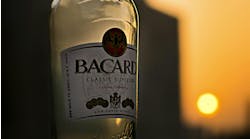I was reading some old Wal-Mart materials and was reminded that Sam Walton thought in terms of two different types of costs: visible costs and invisible costs. Visible costs were related to expenses that would directly impact consumers or they could see. For example, the cost of checkout staff is a visible cost, while invisible costs might be insurance or utility costs.
Sam, so it is told, always tasked executives to try to cut invisible costs over visible ones. This got me thinking about how costs are represented on P&L statements and how representing costs differently would affect how food marketers make decisions.
[sidebar id=1]
The first cost I think would be treated differently by marketers is opportunity costs. This is the cost associated with not doing something or, as the name implies, a missed opportunity. For example, if the decision was how much inventory to stock, the various costs associated with that inventory sitting in a warehouse would be shown on the P&L.
However, if in the process of holding down inventory costs you have an out-of-stock situation, the costs of the short-term and long-term lost sales are not reported. A short-term loss is just that missed sale. Long-term costs would be, for example, the continued cost of lost sales as the consumer buys a competitor’s product and decides the replacement is just as good as your out-of-stock brand. My guess is that if these expenses were reported, we would have many fewer out-of-stocks.
However, these may be “small potatoes” (if you consider billions of dollars to be small potatoes) compared to the opportunity costs of failing to introduce new products.
When one has to make decisions about new products, one often only considers the out-of-pocket costs. Everyone knows it is important to consider alternatives but what if those costs appeared on the P&L? Would we be quicker to move ahead?
I worked with a company back in the 1970s that was ahead of the “healthy foods” craze. The company researchers identified the “health” segment as a potential for foods that could make a healthy promise. The new products team pleaded with top management to try to go ahead and create this new category. Top management didn’t believe that people would buy food for reasons of health so they didn’t go ahead with the project. They thought there was too much potential (out-of-pocket) losses.
A few years later “Healthy Choice” hit the market. No one was ever held accountable for missing a very lucrative opportunity.
Without getting too statistical, we can control costs of the two types of errors: the visible and invisible. We call them alpha or type I errors and beta or type II errors. An example of a type I error is when you introduce a new product and you should not have. If this mistake is made, it is a very visible type of mistake because it would be going ahead with a new product when it actually will fail. All the costs of creating and launching a new product are visible and recorded.
The other type of error is called type II or beta error. An example of a type II error is when you do not introduce a new product when you should have. Thus, you did not have visible costs (since you decided NOT to introduce the new product) but you have all of the opportunity losses associated with this decision.
Now here’s the kicker: You can’t really protect against both types of errors using the same research data. That is, when you statistically protect against a visible error, you increase the chances of having an opportunity loss and vice versa.
The accountants have created systems that reflect the costs of obvious or visible mistakes, and they reward executives for failing to take risks. Many food companies may be losing more every year on what they don’t do rather than what they actually do. Every great general or sports coach has thrown caution to the wind and gone for the gold on occasion. Being a great food company takes more than playing it safe all the time.
Why do accountants claim they can’t record opportunity cost? They tell me these costs are hypothetical and not real. This is a lame excuse. We set rates of depreciation on equipment and there is no evidence that the equipment is declining at the rate the accountants estimate. That’s hypothetical.
It is my opinion that when contemplating big investments that require some sort of financial commitment, a company should set up two teams. One looks at visible costs -- making a mistake by acting; and another team (or person) that looks at the costs of not acting when you should have. It’s almost like a court hearing where both sides make their cases. This system will increase the chances that the best decisions are made and gives a hearing to all the arguments.


